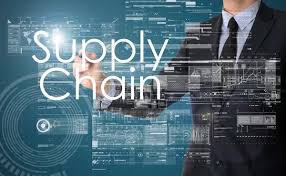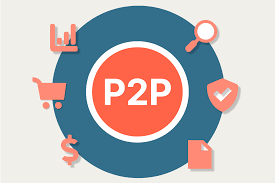
In today’s fast-paced global economy, businesses rely on efficient operations to stay competitive. One of the most vital aspects that drive operational excellence is supply chain planning. But what is supply chain planning, and why is it so crucial in modern business environments?This blog breaks down the fundamentals of supply chain planning, explores its importance, discusses key processes, and highlights its impact on a company’s bottom line. Whether you're new to the field or a seasoned professional, this guide will help you understand everything you need to know.
Understanding What is Supply Chain Planning
What is supply chain planning? Simply put, supply chain planning is the process of forecasting demand and managing the flow of goods, information, and resources to meet customer requirements efficiently and profitably. It involves predicting future needs, ensuring the availability of materials, optimizing production schedules, and coordinating logistics. Companies that master supply chain planning can reduce costs, improve customer satisfaction, and respond quickly to market changes. It aligns supply with demand in a way that maximizes service levels and minimizes waste.
The Importance of Supply Chain Planning
Understanding what is supply chain planning reveals its critical role in ensuring business continuity. Here’s why it matters:
- Enhances visibility: Provides end-to-end insights across supply networks.
- Improves efficiency: Minimizes production downtime and inventory costs.
- Boosts customer satisfaction: Ensures timely delivery and product availability.
- Supports decision-making: Enables data-driven strategies and scenario planning.
Without effective planning, companies face risks like stockouts, overstocking, delayed deliveries, and financial losses.
Key Components of Supply Chain Planning
Supply chain planning is not a single activity; it comprises several interconnected components:
Demand Planning
Demand planning involves forecasting customer demand using historical data, market trends, and predictive analytics. This step answers the question: “How much product will we need and when?”
Supply Planning
Supply planning focuses on how to meet forecasted demand. It includes determining inventory levels, replenishment cycles, and production capacities.
Production Planning
Production planning ensures that manufacturing processes are aligned with supply and demand forecasts. It schedules operations, allocates resources, and optimizes workflows.
Sales and Operations Planning (S&OP)
S&OP is a strategic process that aligns the company’s sales, marketing, supply chain, and finance departments. It balances supply and demand, sets priorities, and plans for contingencies.
Inventory Planning
This component manages stock levels, safety stock, and reorder points to avoid excess inventory or shortages.
Benefits of Supply Chain Planning
Now that we’ve addressed what is supply chain planning, let’s look at its benefits:
- Cost Reduction: Efficient planning reduces waste, lowers inventory holding costs, and improves resource allocation.
- Increased Agility: Enables faster responses to market changes, disruptions, or customer demands.
- Improved Forecast Accuracy: Leads to better production and distribution decisions.
- Enhanced Collaboration: Brings cross-functional teams together with unified goals and metrics.
Challenges in Supply Chain Planning
Despite its advantages, supply chain planning comes with challenges:
- Inaccurate Forecasts: Poor data can result in unreliable predictions.
- Supply Chain Disruptions: Events like pandemics, geopolitical issues, or natural disasters can cause unexpected interruptions.
- Data Silos: Lack of integration between systems and departments hampers visibility and efficiency.
- Changing Consumer Behavior: Rapid shifts in buying patterns make it hard to plan effectively.
How Technology Enhances Supply Chain Planning
Digital transformation is reshaping how businesses handle supply chain planning. Tools like artificial intelligence (AI), machine learning, and cloud computing are boosting accuracy and agility.
- AI-powered forecasting improves demand predictions using real-time data.
- Cloud-based platforms facilitate collaboration among global teams.
- Advanced analytics provide actionable insights to optimize supply chain strategies.
Best Practices for Effective Supply Chain Planning
To make the most of your supply chain planning efforts, consider the following best practices:
- Invest in integrated planning tools
- Collaborate across departments
- Use real-time data and analytics
- Review and adjust forecasts regularly
- Incorporate scenario planning
Adopting these strategies ensures that your supply chain is resilient and adaptable to change.
Real-World Example: How Supply Chain Planning Drives Success
Let’s consider an example: A leading electronics company experiences frequent stockouts due to poor forecasting. After implementing a robust supply chain planning system with AI-driven demand forecasting and real-time inventory tracking, the company reduced stockouts by 35% and improved customer satisfaction scores significantly. This example highlights the transformational power of supply chain planning when done right.
Conclusion: Why You Need to Prioritize Supply Chain Planning
So, what is supply chain planning, and why should businesses care? It's a strategic, data-driven process that aligns supply with demand, minimizes costs, and enhances service delivery. In today’s uncertain and competitive environment, effective supply chain planning is not just a nice-to-have—it’s a business imperative. From improving customer experiences to driving operational efficiency, the benefits of mastering supply chain planning are undeniable. Companies that embrace advanced planning techniques and technologies will be better equipped to thrive in the future.
Frequently Asked Questions (FAQs)
1. What is supply chain planning?
Supply chain planning is the process of forecasting demand and managing resources to ensure that products are available to customers at the right time and place.
2. Why is supply chain planning important?
It helps businesses reduce costs, improve customer satisfaction, and respond swiftly to changes in demand or disruptions.
3. What are the key elements of supply chain planning?
The main components include demand planning, supply planning, production planning, inventory planning, and sales & operations planning (S&OP).
4. How does technology impact supply chain planning?
Technology enhances planning accuracy, improves collaboration, and enables real-time decision-making through AI, machine learning, and cloud platforms.
5. What is the difference between demand planning and supply planning?
Demand planning forecasts customer needs, while supply planning determines how to meet that demand with available resources.
6. What industries benefit from supply chain planning?
Industries such as manufacturing, retail, healthcare, and e-commerce benefit significantly from effective supply chain planning.
7. Can small businesses implement supply chain planning?
Yes, even small businesses can adopt scalable planning tools to optimize operations and stay competitive.
8. What is S&OP in supply chain planning?
Sales and Operations Planning (S&OP) is a strategic process that aligns a company's supply chain with its business goals by coordinating across departments.
9. What tools are used for supply chain planning?
Popular tools include SAP Integrated Business Planning (IBP), Oracle SCM, Kinaxis RapidResponse, and JDA (Blue Yonder).
10. How often should a company review its supply chain plan?
Supply chain plans should be reviewed regularly—monthly or quarterly—and adjusted based on market trends, performance metrics, and changing customer demands.

